 In the first part of this religion, spirituality and comics sampler, we looked at Mark Waid and Alex Ross’ Kingdom Come, Vertigo’s Lucifer, and Matt Hawkin’s The Tithe. In this instalment of the sampler we turn to a couple of Superman stories, encounter the mysterious Phantom Stranger, and investigate a murder in the Vatican.
In the first part of this religion, spirituality and comics sampler, we looked at Mark Waid and Alex Ross’ Kingdom Come, Vertigo’s Lucifer, and Matt Hawkin’s The Tithe. In this instalment of the sampler we turn to a couple of Superman stories, encounter the mysterious Phantom Stranger, and investigate a murder in the Vatican.
4. Superman: Redemption
- Publisher: DC Comics (2007)
- Writers: Fabian Nicieza, Kurt Busiek
- Artist: Carlos Pacheco, Al Barrionuevo, Allan Goldman, Bradley Walker, Peter Vale, Walter Simonson
- Inker: Al Barrionuevo, Robin Riggs, Ron Randall, Jesús Merino, Walter Simonson
- Publisher link: https://www.dccomics.com/graphic-novels/superman-1939/superman-redemption
The trade paperback, Superman: Redemption, brings together three different Superman stories with religious contexts:
Angel: Superman #659.
Redemption: Action Comics #848 & Action Comics #849
The Beast from Krypton: Superman #666.
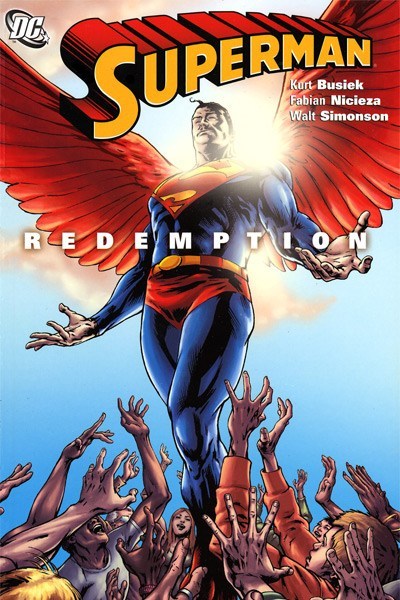
The stories are interesting because the writers use an existing ‘non-religious’ narrative world or character – Superman – to explore something of the notion of religion and religious authority.
In Angel, where the central character in the story is an elderly woman who believes Superman is her personal guardian angel, the writers explore the idea of recovering faith in oneself rather than an external force in order to change the world for good. It plays with the motif, perhaps, that in the world God’s agents of change are everyday people placed in everyday contexts who display hope, courage, and fidelity to their brothers and sisters as they “love their neighbours,” rather than waiting to God to do that miraculously.
Redemption explores the idea of a Superman-like character raised in a fundamentalist Christian context, who’s acts in ‘good faith’ religiously, but in doing so empowers someone else to do ‘evil’. In this story, we hear Superman commenting,
“This is about a good if misguided – young man who needs to control his actions…even if those actions are guided by his beliefs…No, I have no problem with religion. I have a problem with abusing one’s power in the name of anything.”
Perhaps here we see the concept of freedom of religion and belief within a Western liberal democracy being expressed in the language of tolerance and pluralism, provided it doesn’t seek to impose itself in the public sphere in a way that is perceived as ‘hurtful’ or ‘abusive’. It’s a basic exploration of freedom of expression and religion being explored, though Superman acts as ‘the State’ making sure that religion sits in its own private world and doesn’t ‘rock the boat’ in wider society.
The final story, The Beast of Krypton, my least favourite of the three, has Superman influenced by a Kryptonian demon, and then “falling” to Hell. It’s all a ruse, of course – a plan of the Phantom Stranger’s (see below for this character), but it depicts Hell as a necessary place for so long as there are greed, anger and hatred in the darkness of the human heart. This is in keeping with much of recent popular cultural reflection on Hell, which sees it as a place created by human beings who feel the need to be punished for things they did while alive, and keeping alive the cultural afterlife of a Dante-style Hell.
Overall, though, an interesting mix of stories exploring the contours of religious faith through a mainstream, and much beloved, superhero.
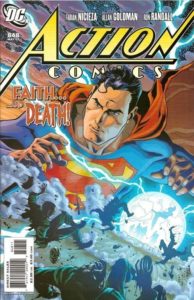
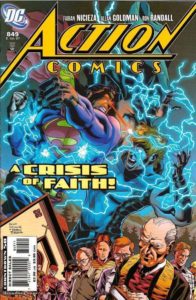
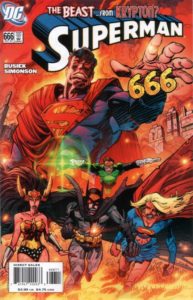
5. Superman: Peace on Earth
- Publisher: DC Comics (1998)
- Writers: Paul Dini, Alex Ross
- Artist: Alex Ross
- Wikipedia link: https://en.wikipedia.org/wiki/Superman:_Peace_on_Earth
Superman: Peace on Earth is a large format graphic novel that is the first in a tabloid-sized series of standalone stories by Paul Dini and Alex Ross created for the 60th anniversary of DC Comics.

In this particular story, set at Christmastime, Superman reflects on the poverty and suffering in the world and commits himself to attempting to eradicate it through his own efforts. Ultimately, thwarted by the humanity he is attempting to serve, he abandons his quest and instead seeks to serve as an inspiration to others.
The story is an interesting one, with Superman cast as the saviour of the world, but ultimately unable to save humanity because of the self-interest and darkness of the human heart. It touches on theodicy, as well as a kind of Spider-Man-like “With great power comes great responsibility”. It also stands a little against the standard monomyth of American popular culture described by scholars, Robert Jewett and John Shelton Lawrence in The American Monomyth (1977), as using the central Messianic myth of Christianity as a template for use in popular culture.
They frame this as a community, such as a town threatened by bandits in a Western or a city like New York (aka Metropolis/Gotham City) in a comic book story, threatened by evil (e.g. the bandits or Green Goblin or the Joker). The normal institutions of the sheriff, the police, or the army are powerless to contend with this threat, and into this situation a selfless superhero emerges (e.g. the lone gunman or Spider-Man). He or she carries out his or her ‘redemptive’ task in the face of opposition. When all seems lost, the hero “rises from the dead”, defeats evil through an act of violence, and then recedes into obscurity. Except in Superman: Peace on Earth, the hero is unable to save the day and the monomyth is inverted.
The artwork in the comic is, as might be expected from Alex Ross, beautiful and the story is one that has much to commend it as a piece to get people thinking about how the world, and people’s hearts and minds, might be changed.
The other comics in the series are shown below.
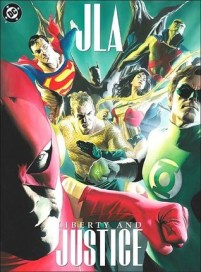
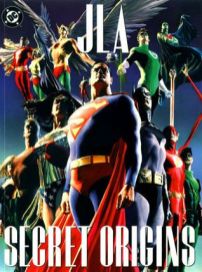
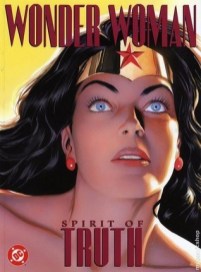

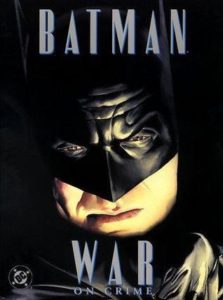
6. The Phantom Stranger
- Publisher: DC Comics/Vertigo (First appearance Aug-Sept 1952)
- Created by: John Broome (writer), Carmine Infantino (artist), & Sy Barry (inker)
- Publisher link: https://www.dccomics.com/characters/the-phantom-stranger
- Wikipedia link: https://en.wikipedia.org/wiki/Phantom_Stranger
The Phantom Stranger has been a character in the DC universe since his creation in 1952 by John Broome and Carmine Infantino. He exists as one a of number of supernatural ‘heavy-hitters’ who exist alongside the regular superheroes, sometimes working with them, and sometimes just providing advice or observing.
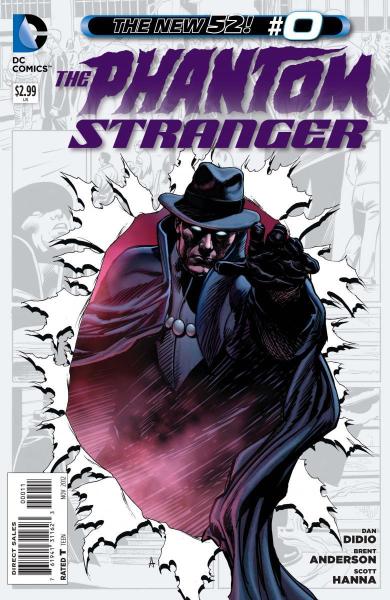
The origin story of the character varies but is intertwined with Judeo-Christian mythology including being a man spared from divine wrath, the Wandering Jew, and a fallen angel. As such, the Stranger is one whom appears destined to walk the earth for eternity, observing humanity and occasionally intervening, but forever separated from people and relationships.
As such, the character lends itself to the exploration of supernatural and religious elements, interacting not just with figures such as Superman or Batman, but also with Swamp Thing, John Constantine, Dr Fate, and the Justice League Dark. In order for this to work, the cosmology of the DC universe is brought more fully into the everyday including the Presence (God), heaven and hell, angels and demons, and interplay between material and spiritual dimensions.
In one of the recent reboots of the DC universe (2012), the Phantom Stranger’s origin is reworked to be that of Judas Iscariot (The Phantom Stranger #0), who was judged by a supernatural council (as a proxy for the Divine) and returned to Earth to walk forever as a stranger amongst human for the crime of betraying Jesus of Nazareth. (The Phantom Stranger is also named in this reboot as part of the “Trinity of Sin,” comprising the Stranger, Pandora, and The Question.)
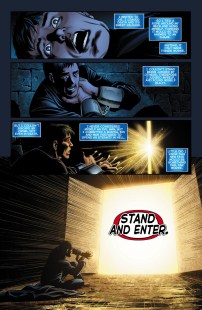
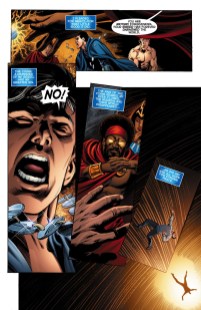

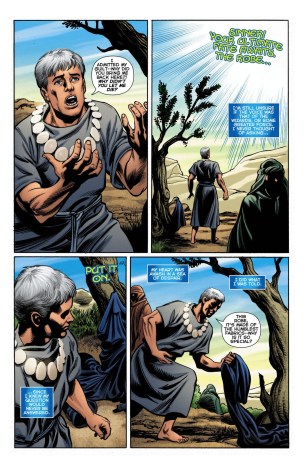
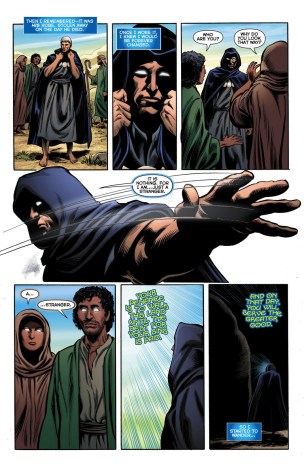
This identification of the Stranger with a figure from the Christian New Testament, and especially one who is closely connected to Jesus Christ, leads to narratives which become explicitly theological. Here, the Stranger is placed on earth to earn his redemption by carrying out tasks for God, often at great personal cost to the Stranger and those around him, but which are part of the great ineffable plan. For each task completed, willingly or unwillingly, the Stranger loses one of the thirty silver coins around his neck – a necklace that is a constant source of awareness of the sin and suffering in the world. As an aside, while Jesus Christ is often referred to in the series, he doesn’t make an appearance, though he is dealt with respectfully in the comic’s text.
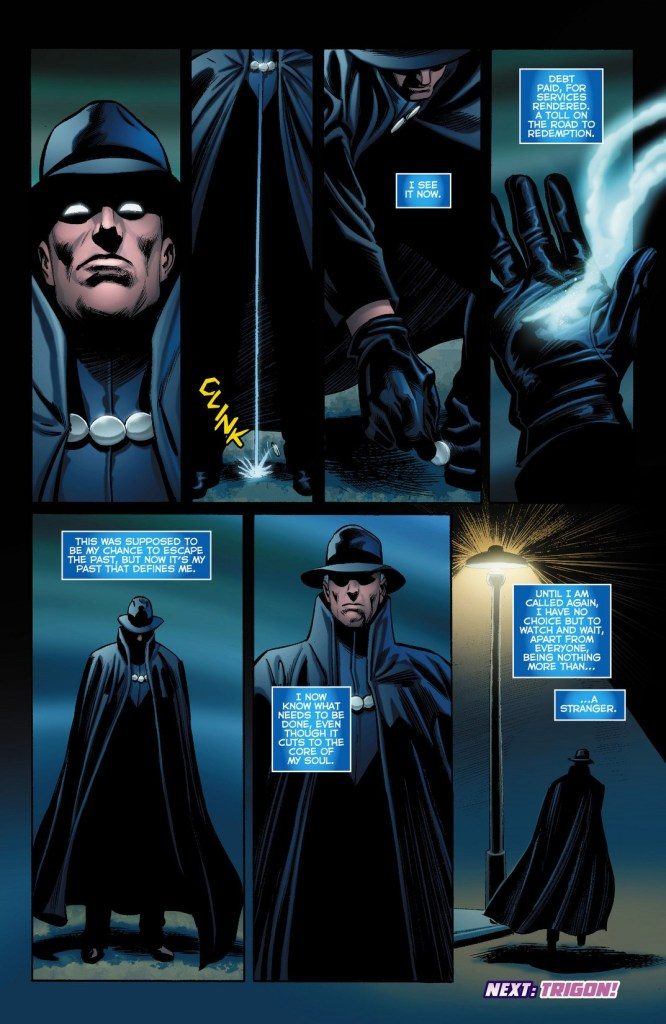
The current story arc leaves the Stranger as something of the free agent, though as one might surmise from this conversation with the Presence/God (manifested through most of this incarnation of the Stranger as a small dog) the Divine still has an interest in him and the Stranger own nature has started down the road to redemption, if only he will believe it himself.
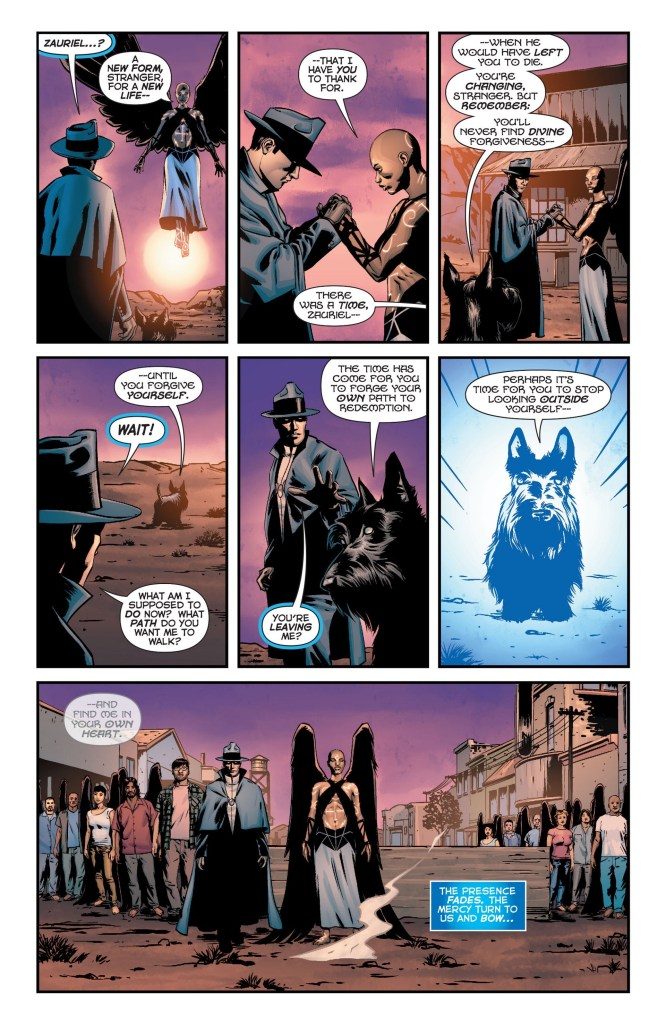
7. Revelations
- Publisher: Dark Horse Comics (2005/2006)
- Creators: Paul Jenkins and Humberto Ramos
- Publisher link: https://www.darkhorse.com/Books/10-088/Revelations-TPB
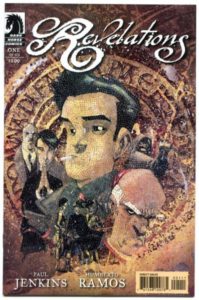
I’m a fan of British TV detective dramas, with their flawed everyman and everywoman characters, the languid turn of pace, and a general world-weariness about the characters and their attire. The comic and graphic novel, Revelations, has that in spades – Charlie Northern, the chain-smoking, cynical, lapsed-Catholic detective who is asked by an old childhood friend (who is now a senior cleric) to investigate a murder in the Vatican. It is a detective story, set in a religious context, told through a graphical medium. It’s like a thinking person’s The Da Vinci Code.
The plot works like a well-written crime story with the immediate likely suspects, inside and outside of the Church, all playing their parts: the murdered priest was considered the logical successor to the ailing pontiff; it appears elements of the Curia, as well as the Swiss Guard are implicated, or at least obstructing the path to justice; there is a parallel investigation into the Vatican finances; and there the standard byplay between the British cop and his Italian counterparts. Throw in a love interest, some additional murders, evidence lost, and what looks like a secret society within the Vatican and the story romps along.
I won’t reveal the denouement but suffice to say those who are interested in the interplay between the natural and the supernatural will find enough to satisfy them, as well as the solving of the crime with a twist.
If you liked the style of Dan Brown’s The Da Vinci Code, Umberto Eco’s The Name of the Rose, Scott Mariani’s Ben Hope series, or detective dramas like Vera, A Touch of Frost, Taggart, or Inspector Morse, then this graphic novel might grab you. It’s a nice change from religion and comics being only about those in spandex, capes or wielding magic.